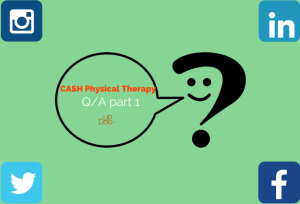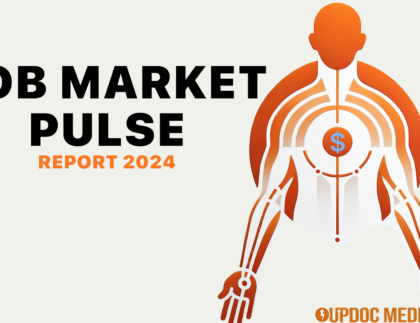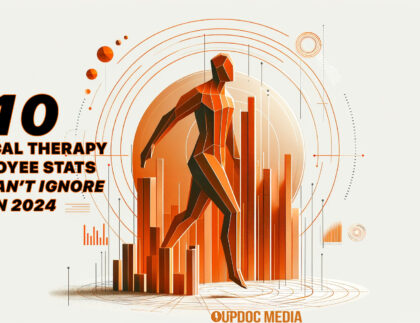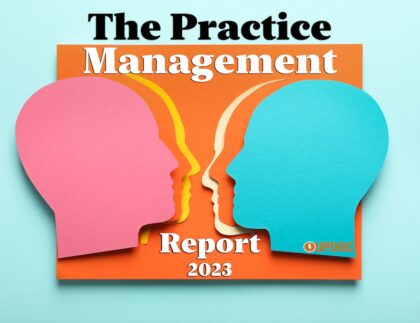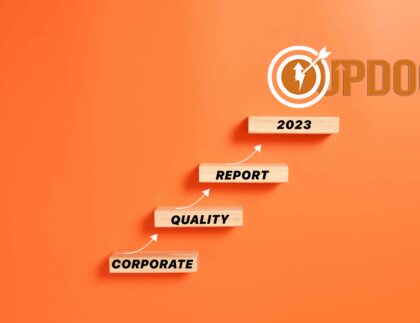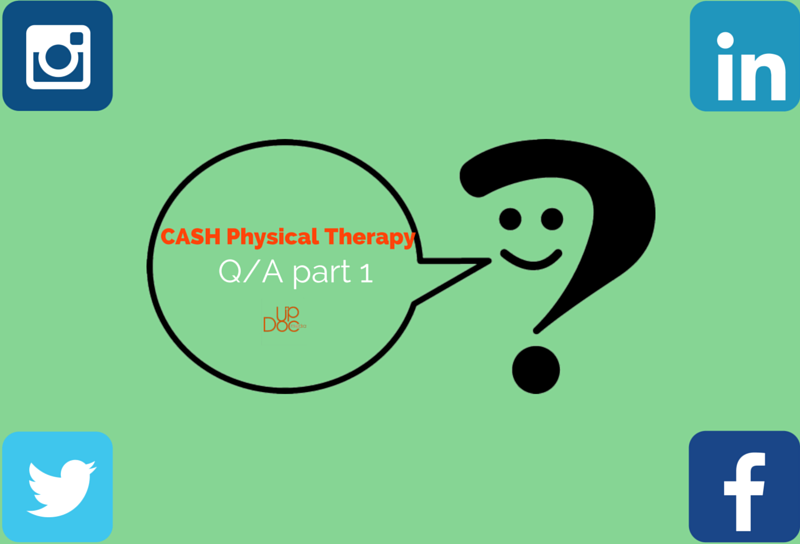
Today, I am truly pleased to bring you this guest post; the first of its kind from a series of three, on a topic that has only gained in popularity: #CashPT. That’s right, we at UpDoc Media approached the three biggest names in the CashPT game: Aaron LeBauer, Ann Wendel, and Jarod Carter. We asked each of these experts the same three questions about CashPT; their answers to be shared, with you exclusively on UpDoc Media!
We kick it off with Dr. Aaron LeBauer and his perspectives. In the coming future, be sure you keep your eyes out for the words and wisdom of Ann Wendel & Dr. Jarod Carter!
So, without any further ado… Take it away, Aaron!
What is the biggest hurdle in CashPT?
Some people think the biggest hurdle to over come is the amount of money you’re asking your patients to pay, but the biggest hurdle is not “how do I convince patients to pay $XX?” The biggest hurdle is the recalibrating the mindset of the therapist and the client. Really, it all comes down to Mindset! Mindset! Mindset!
The therapist’s mindset and the patents’ mindset are both critical. Without the cash-based mindset, nothing in this practice model is possible.
What is the cash based-mindset?
1) Direct Access is key. Even if you live in a state without or with limited physical therapy direct access, the mindset that patients should seek you out 1st for musculoskeletal problems is vital.
2) Be the Doctor, because you are! If you talk or write about physicians as “Docs,” “Your Doctor” or even “Doctors,” you are placing their care and opinion above yours. Physical therapists are “Doctors” too. You may be a DPT, you may not be, but whether you have a bachelors, masters, or doctoral degree, you want your patients to view YOU as their primary go to person when they hurt, have pain, or are injured.
3) Let go of the idea that physicians will refer patients to you. Even if they do, the patient’s are not typically ready to pay you out of pocket, even if it means they need less treatments and the situation proves better for them financially.
4) What are you worth? You are no longer worth what you earned for your salary or what the patient paid in co-pays each visit. You have to decide what you are worth, and then ask people for that much before or after their treatment.
Once you start to change your mindset from a person who provides a treatment directed by someone else to a primary care provider who decides on the treatment, you will begin to thrive and find patients in your cash-based practice.
How do you market a CashPT business?
The best way to market a cash-based practice is directly to the customer, your potential patient. This is called Direct to Patient Marketing. Direct to patient marketing is in stark contrast to marketing to “Doctors.” When we market to “Doctors” or as I prefer, physicians, we are putting ourselves into the traditional roll of being the recipient of the physician’s “graces.”
First off, in my practice, most patients who are referred by physicians or physicians’ offices do not have the right mindset to be treated in a cash-based practice. They are not ready to pay more than their co-pay for physical therapy. Why pay your surgeon $50 and then the physical therapist $100? 3 times a week for 6 weeks? There is just a big disconnect between these two models.
It really takes the patient, being an advocate for themselves to do their research to determine “what is the best value I can get?” The patient needs to be thinking, “my friend “Susie” said that Dr. LeBauer helped her back pain, that’s what I need.” The patient also needs to have a pre-framing of what to expect. This doesn’t typically happen when “referred” in a traditional path.
The second pitfall of focusing our marketing efforts to physicians is when you position yourself or your practice to have a large portion of patients being referred from a small number of physicians. What happens when one of them retires, starts working for a large hospital system and is prohibited from referring patients to you, or disagrees with you and stops sending patients? By not diversifying, you put your practice and livelihood at risk. This financial relationship may also affect your decision-making. What happens with you disagree with a referring physician? Will you go to bat for your patient’s best interests at the expense of loosing new patients?
When we market directly to patients, we are speaking their language, putting ourselves in places where they are likely to be and our message tells them what they will achieve and experience in our practice. There are many ways to do this, but my #1 recommended strategy is to get visible on Google and claim your practices Google Business Listing and get reviews.
Which is more difficult to do right out of school: Opening a CashPT practice or opening a traditional practice?
They both have their own challenges and both types of practice models are difficult to start right out of school.
All things are the same to get a business off the ground. A cash-based practice is easy to streamline and create as a very low overhead business. On top of setting this up, in a traditional physical therapy practice you need to add insurance & Medicare credentialing, hiring additional support staff, finding someone or some entity to process claims, and, you likely will have to deal with delayed or reduced payments.
On the other hand, in cash-based practice, as a clinician you must be able to provide a higher level of service and get patients better faster and better when they haven’t achieved success elsewhere.
In a traditional practice, your barrier to entry is much lower (not necessarily cost of entry) and patient volume can be much higher. And, you may find less resistance from your peer and potential patients to starting a practice in this model.

Aaron LeBauer PT, DPT, LMBT, RYT owns LeBauer Physical Therapy in Greensboro, NC which is a 100% cash-based physical therapy practice. He opened his practice two months after graduating from Elon University’s doctor of physical therapy program. Find him on Twitter @LeBauerPT and his blog www.LeBauerConsulting.com where he enjoys sharing his experiences in cash-based physical therapy and helping other therapists find freedom in practice.
